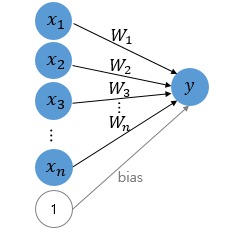while (1): study();
1. Cloud Concepts 본문
* 해당 콘텐츠는 Adam marczak 님의 Azure Fundamentals 강의를 보고 작성되었습니다. 수강하는데 시간은 오래 걸릴지라도 그림과 실습으로 정리가 잘 되어있으니 직접 수강을 권합니다.
https://www.youtube.com/c/Azure4Everyone/playlists
Adam Marczak - Azure for Everyone
www.youtube.com
1. Cloud computing and Vocabulary
- Cloud computing: Delivery model over Internet
* Components
1) Storage
2) Compute power
3) Networking
4) Analytics
* Characteristics
1) Scalability
2) Elasticity
3) Agility
4) Fault tolerance
5) Disaster Recovery
6) High availability: running for extended periods of time
2. Economics of scale
scale과 price per unit은 반비례 관계 -> MS Azure가 저렴한 이유
3. CapEx vs OpEx
| CapEx | OpEx | |
| upfront cost | high | X |
| ongoing cost | low | usage |
| tax deduction | over time | same year |
| early termination | X | O |
| maintenance | high | low |
| value over time | decrease | same |
4. Comsumption-based model
- Usage-based pricing -> No waste, No upfront
- Very granular measurement
5. IaaS vs PaaS vs Saas
1) on-premises: manage everything
2) IaaS: Infrastructure managed by provider (ex. VM)
3) PaaS: Platform managed by provider (ex. SQL, App services)
4) SaaS: Everything managed by provider (ex. Outlook)
6. Public, Private, Hybrid cloud deployment models
1) Public cloud: No datacenter
| Adv | Disadv |
| No CapEx | Security & Compliance |
| High availability & Agility | Ownership |
| No hardware | unique business request |
| No skill |
2) Private cloud: No could
| Adv | Disadv |
| Flexibility | Initial CapEx |
| Security | Agility |
| High level of skill |
3) Hybrid cloud: cloud + datacenter
| Adv | Disadv |
| Flexibility | Expensive |
| Security | Complicated |
| Agility | High level of skill |
7. Geographies, Regions and Availability zones
1) Data Center: group of networked servers
2) Region
- more than one datacenter connected with low-latency
- some services are avilable in certain groups
- 50+ regions (w. government, partnered regions)
3) Availability zone: protect from data center failure
- Services
zonal services: zone by zone (VM, Disks)
zone-redundant services: all zones (SQL, Storage)
- Not all region supported
- 3+ zones are needed in a region
- 1+ data centers needed in a zone
4) Region pairs
- A region is paired with another region
- Pairs are static
- Each pair resides within the same geography (exc. Brazil South)
- At least 300miles away
- Planned updates across the pairs
5) Geography
Each region belongs to only one geography
8. Resources, Resource Group and Resource Manager
1) Resources: Purchased services (json format)
- can be in differenct locations
- can be moved
2) Resource groups: Holds logically related resources
- criterion: type, lifecycle, department, billing, location, ...
- Each resource must be in one & only one resource group
- should be in one location
- cannot be nested
3) Resource Manager: Management layer for all resources (or resource groups) in unified language
'학습 > AZ-900' 카테고리의 다른 글
| 추가정리 (0) | 2021.11.27 |
|---|---|
| 4. Azure cost management & Service Level Agreement (0) | 2021.11.25 |
| 3. Security, Privacy, Compliance and Trust (0) | 2021.11.25 |
| 2. Core Azure services (0) | 2021.11.21 |




